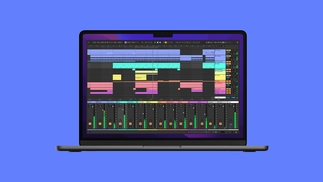Ableton Live 10: 10 Things We Love

Live 10 is dropping on Feb 6th – here’s why you should be excited...
Ableton Live 10 was announced late last year, but it’s only been the last few days that mere mortal users have been able to get their hands on the tenth version of the popular DAW. With a complete re-design, new devices, under-the-hood improvements and workflow changes, it's one of the most comprehensive updates to Live yet. But has it been worth the wait? We break down the ten things we're most excited about in Live 10. For more info on what's new check our announcement post here.
1. Wavetable

Among the new devices in Live 10, Wavetable has got to be the most interesting. A new synthesizer, Wavetable brings the synthesis of the same name to the Ableton platform and is the first to offer an extended view, taking over the whole of the DAW screen with the click of a button. Wavetable synthesis is usually best for evolving pads, mallet sounds, keys and other-wordly FX and this new synth is no different, offering hundreds of easily-tweakable presets. The sound is excellent, the interface is brilliant and the potential is huge. Even if you know nothing about wavetable synthesis, you’ll love this new synth.
2. Capture

In the age of ‘always on’, Ableton have taken surveillance to the next level with their new feature Capture. If you’ve ever lost an idea or stumbled on a happy accident you can’t remember, this is for you. As long as the MIDI channel is enabled, Live can ‘remember’ what you played and automatically create a perfect loop, even if you weren’t recording. Simply press the Capture button and the clip will appear. Magic!
3. Drum Buss

One of the most exciting new devices in Live 10, Drum Buss combines everything you need to process your drum group buss. Featuring three types of saturation, a transient designer, high-pass filter, bitcrusher, parallel compressor and sine wave generator to bolster your bass, it’s a comprehensive solution to your drum buss needs. The sub bass generator is particularly useful, allowing users to dial in a sine wave in the key of their track to add weight and power to your mix, without clashing with the bass and other musical elements. It can be slightly overkill, so the dry-wet slider is welcome.
4. Split Stereo Panning Mode

While this new feature may not seem exciting on the surface, Split Stereo Panning Mode separates the left and right channels, allowing you to pan them individually. Previously, panning simply shifted the entire signal to the left or right, but with this new feature it’s possible to only pan the right channel, for example, giving you much more natural control over your audio signals. By moving both channels individually, a more natural stereo field is possible. It’s a feature that’s been present in other DAWs for a long time so it’s great to see Live adopting a more mixing-friendly tool.
5. Groups within Groups

Another useful addition for mixing is the new Groups within Groups feature. As you might have guessed you can now create groups of channels within other groups, making it much easier to organise your session and process channels together.
6. Push additions

Live 10 has brought with it some exciting new features for Push users, including simultaneous note sequencing, advanced device visualization and MIDI clip note view. There’s a lot more going on the Push screen including real-time response from your audio processing, making it even easier to move away from the laptop screen and focus on the music.
7. Max for Live

Since Ableton acquired Max developers Cycling ’74 last year it was only a matter of time before Max for Live became more integrated with the main software. In 10, Max for Live is now bundled with the Live Suite installer and extra devices have been added and updated. The Drum Synth range has all had an overhaul, with Envelope, Shaper and LFO all having a refurb. Expect Live and Max for Live to become more and more integrated as time moves on.
8. Echo
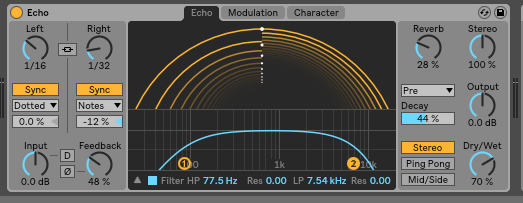
Live’s previous delay offerings were slightly understated with Filter Delay and Simple Delay offering a limited soundscape. That’s all changed now with Echo, a brand new delay device. Emulating more lo-fi tape-style delay, echo offers extra controls such as in-depth modulation and character options, as well as a mid-side mode to sculpt your sounds even further. With Noise, Wobble, pitch modulators, high-pass and low-pass filters and even a built-in reverb – it’s been a long-time coming, but Live finally has a comprehensive delay, and it sounds great.
9. Arrangement View Improvements

Live’s Arrangement View has changed for the better, making it easier to snap clips together, auto-warp audio, use fades and more. Clips now take on a full colour rather than just using a ‘header’ and tracks will automatically crossfade when overlapping. All of it leads to a slicker experience, allowing you to quickly put ideas together. One extra trick that’s really useful is ‘sliding’ the content of a clip without moving the start and end points. Simply hold Alt+Shift and drag your way through the whole audio clip’s contents, while the clip length remains intact.
10. Browser Tagging

Live’s browser has just got a lot more colourful with custom tagging to quickly find and access file types, plugins and samples. You can now also access individual group channels from a Live set, directly from the browser without opening the session. Yet another handy addition.

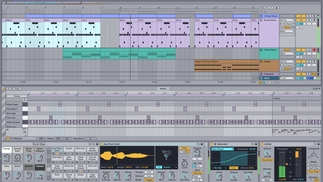

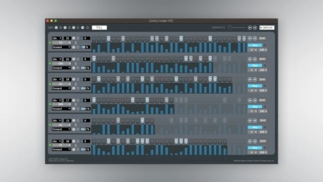
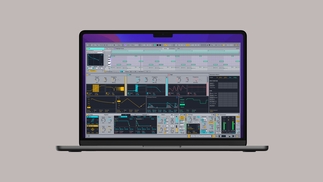
![Photos of NIKS, Coco Em and [M] on a poster for Saffron and Black Artist Database’s new collaborative series](/sites/default/files/styles/djm_23_323x182_jpg/public/2024-01/1329C0D1-B4DF-46F8-9E8D-B3114107E223_1_201_a_0.jpeg.jpg?itok=l8KeQZq6)
